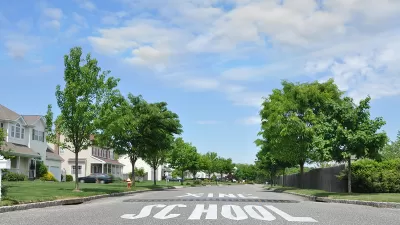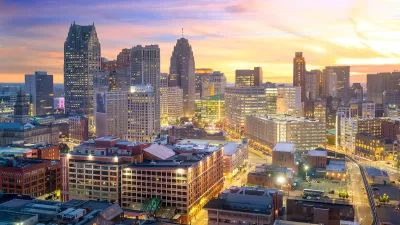It's almost like the Great Recession and the Great Urban Renaissance never happened, as Americans are moving to the suburbs and the Sunbelt than to the nation's urban areas.
Jed Kolko breaks the news of the latest population figures for 2015, as released this week by the U.S. Census Bureau. The big winners, according to Kolko's analysis: the suburbs and the Sunbelt.
Here's how Kolko summarizes the latest population data:
After volatile swings in growth patterns during last decade’s housing bubble and bust, long-term trends are reasserting themselves. Population is growing faster in the South and West than in the Northeast and Midwest, and faster in suburban areas than in urban counties; both of these trends accelerated in 2015.
Kolko provides lists of the fastest growing metro areas, the fastest growing large metro areas, and a few other lists, including lists of metro areas with the steepest population declines. Kolko also shares three trends as takeaways from the data, with more detail provided in the article:
- An accelerating shift of population toward the Sunbelt.
- A recent slowdown in population in urban counties.
- Metropolitan areas with at least one million people grew faster than midsize and smaller metros.
An article by Laura Kusisto for the Wall Street Journal, which follows on Kolko's reporting, argues that the U.S. Census data supports the thesis that the housing boom and bust of the last decade "merely created a temporary disruption" in the way Americans live.
FULL STORY: 2015 Population Winners: The Suburbs and the Sunbelt

Planetizen Federal Action Tracker
A weekly monitor of how Trump’s orders and actions are impacting planners and planning in America.

Maui's Vacation Rental Debate Turns Ugly
Verbal attacks, misinformation campaigns and fistfights plague a high-stakes debate to convert thousands of vacation rentals into long-term housing.

San Francisco Suspends Traffic Calming Amidst Record Deaths
Citing “a challenging fiscal landscape,” the city will cease the program on the heels of 42 traffic deaths, including 24 pedestrians.

Defunct Pittsburgh Power Plant to Become Residential Tower
A decommissioned steam heat plant will be redeveloped into almost 100 affordable housing units.

Trump Prompts Restructuring of Transportation Research Board in “Unprecedented Overreach”
The TRB has eliminated more than half of its committees including those focused on climate, equity, and cities.

Amtrak Rolls Out New Orleans to Alabama “Mardi Gras” Train
The new service will operate morning and evening departures between Mobile and New Orleans.
Urban Design for Planners 1: Software Tools
This six-course series explores essential urban design concepts using open source software and equips planners with the tools they need to participate fully in the urban design process.
Planning for Universal Design
Learn the tools for implementing Universal Design in planning regulations.
Heyer Gruel & Associates PA
JM Goldson LLC
Custer County Colorado
City of Camden Redevelopment Agency
City of Astoria
Transportation Research & Education Center (TREC) at Portland State University
Jefferson Parish Government
Camden Redevelopment Agency
City of Claremont




























